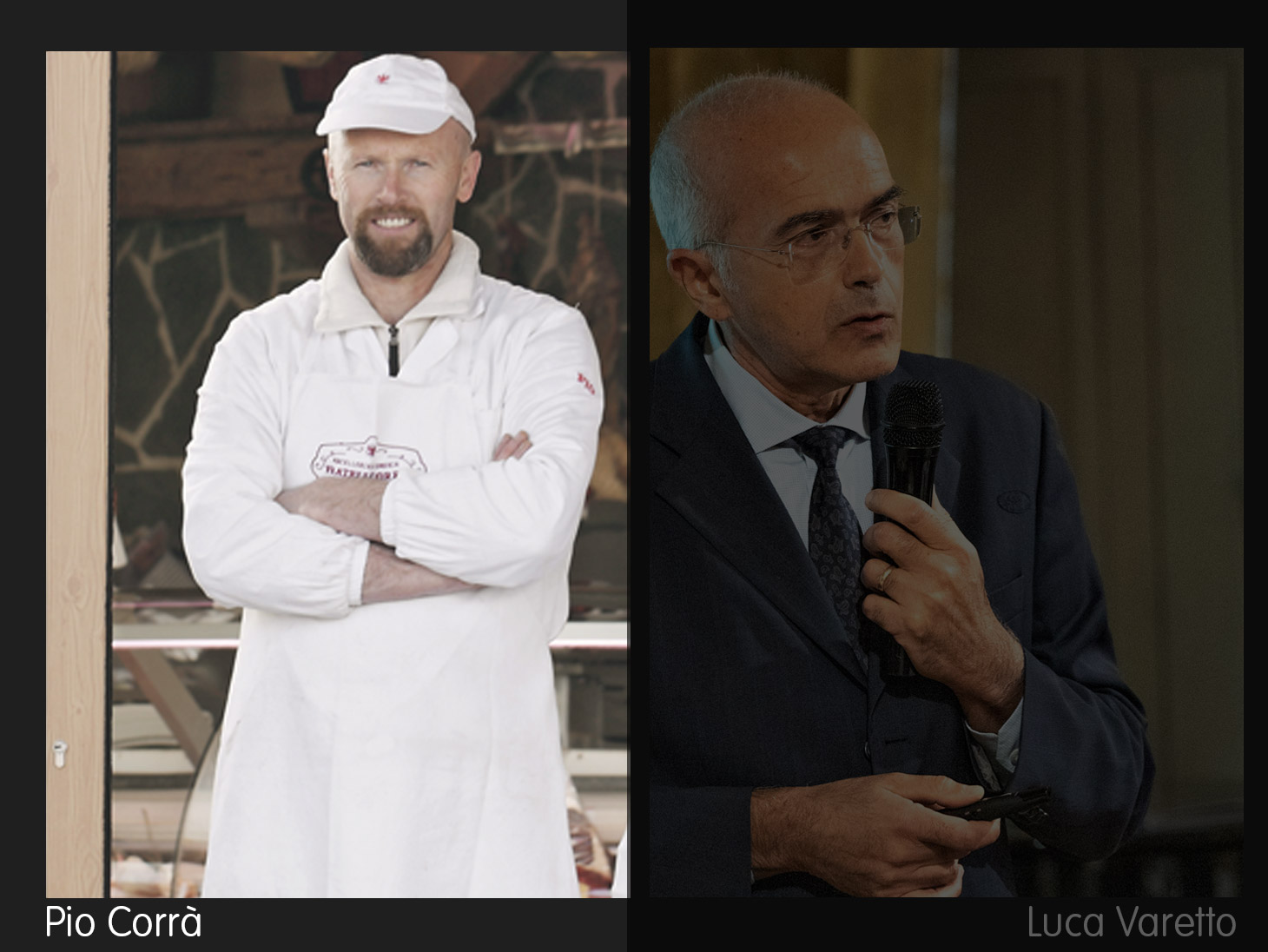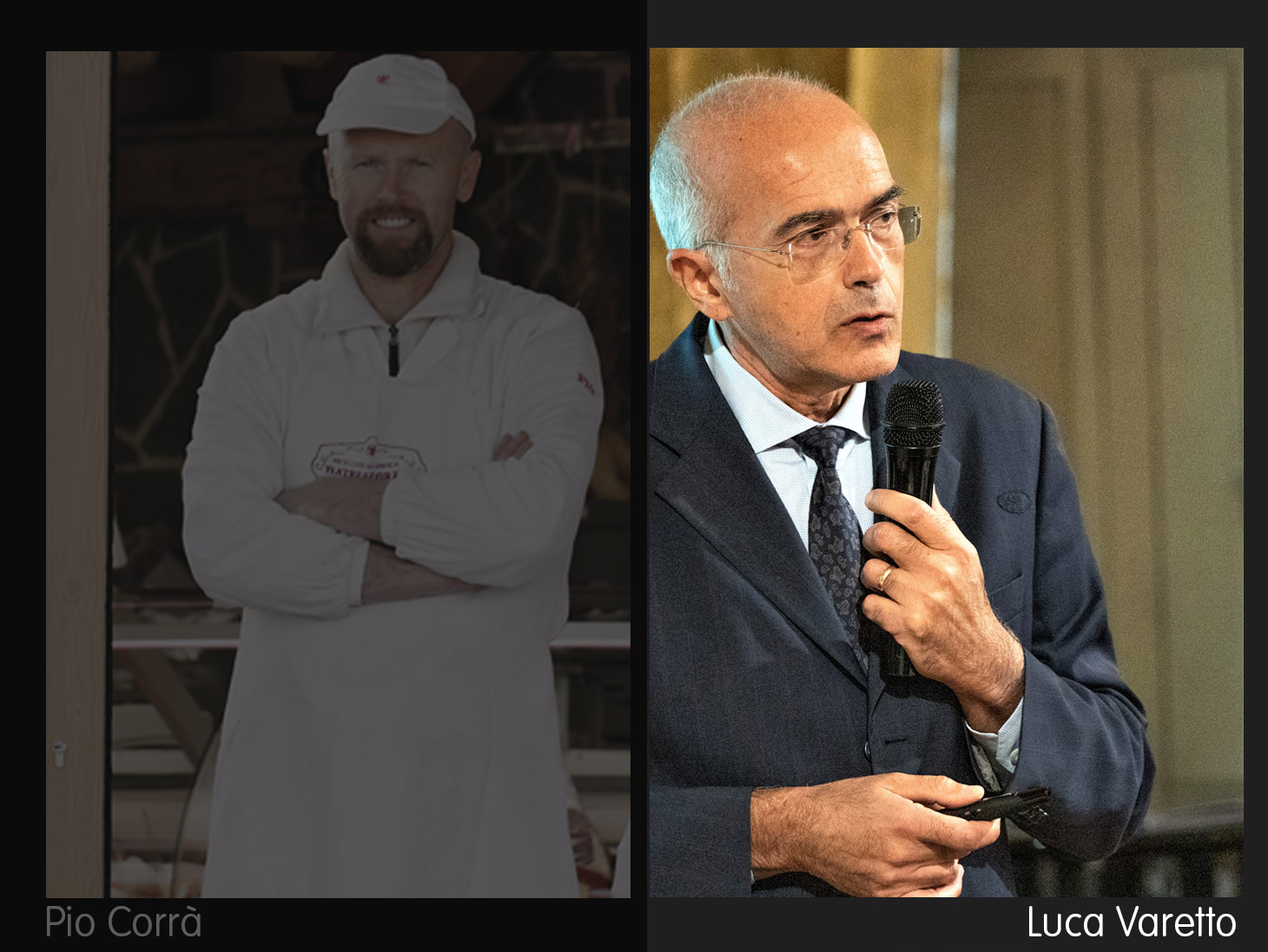From Grigio alpina or Piemontese breed? Bresaola is delicious, both from Trentino and Pidmont
⏱ 3 MINUTES READING
“We interviewed Pio Corrà and Luca Varretto to understand the differences between their products”
CORRÀ
They are the oldest salumificio in Trentino and one of the oldest in Italy. Since 1850 Fratelli Corrà, following the tradition handed down from father to son, process the meat of the territory relying on the recipes created by their ancestors, but adapted to contemporary needs. The production, which takes place in Smarano, in Val di Non, “is completely artisanal” says Pio Corrà, who carries on the family tradition together with his brother Luca and his cousin Federico. A tradition that lasts since four generations.
The grandparents Rita and Giacomo Corrà tought everything to their sons and nephews: the recipes and the secrets for an high quality production, but also the focus on the costumer. This philosophy is reflected also in the labels which are designed to make people understand the meticulous work behind each product. “We process our meats at about a thousand meters above the sea level, above the apple trees of the valley, still using knife and handwork”.
The meats used are all strictly local. The cattle are all Grigio Alpina breed: a native breed very suitable for grazing, it is rustic and frugal, so that can be used both for meat and milk production, it is reared in Trentino Alto Adige region and it is a Slow Food Presidium. The pigs come from Trento or from the neighbouring provinces. Game is a long-standing tradition in the valley. Among the best known products, there is a range of completely natural wurstel, speck, bresaola and carne salada.
VARETTO
When traceability was still unkown to the most, in 1984 in Carrù (Cuneo) Coalvi was born: a Consortium with the aim to distinguish in stores the meat coming from Piemonte breed. Coalvi is a consortium made up by breeders and it created a system to track Piemontese breed, one of the most representative breed in the Italian territory.
“Many years ago the tracking was made through pen and paper, today there is a national register and animals are marked as soon as they born” Luca Varretto, the scientific referent, explains. “In the label it is even possible to identify name and surname of the breeder, the one of the slaughterhouse, the one of the laboratory where the meat has been processed, and all the data about the bovine”.
The Consortium counts 1500 farms and certificates about 17000 cattle every year: the farms where Fassona Piemontese is reared are mainly small, family-owned and with closed loop, meaning that the rearing of mares and fattening of calves take place in the same farm.
“The manager of the farm is usually the owner, but he is also the worker, the obstetrician, the dietician and the farmer since he produces the fodder used to feed his animals”, Luca says. From this strictly sustainable supply chain, the production of Bresaola La Grande Razza Piemontese is born, a cured meat characterized for its lean, soft and tasty meat.
DOUBLE INTERVIEW
1. Name of the product?
2. Origin of the raw material?
Meat from Grigio Alpina breed, grass-fed in Trentino Alto Adige, Slow Food Presidium.
3. Why did you choose this breed?
Because it is one of the oldest inhabitant of the Alps: it is strong and perfect for the mountains, it has high quality meat.
4. Which cuts do you use?
The round cut.
5. How does the salting works?
By immersion in brine.
6. Spices used for the seasoning?
We use a mix of pepper, juniper, cinnamon, cloves and other spices from the ancient family recipe.
7. Which type of casing?
We do not use casing, but we enrol the meat in a natural net which later is taken off.
8. Which is the perfect aging?
90 days at least. Before we turn it twice a week by hand and we massage it for 21 days. Then we smoke it with beech wood and juniper berries at a low temperature, and at the end we leave it seasoning at a controlled temperature and humidity.
9. Why is your product different?
Because of the raw material, local and Slow Food Presidium, the manual processing and the very light smoking with natural smoke
10. How do you suggest preserving it?
The ideal is to keep it vacuum-packed at about four degrees. Once opened, wrapped in a towel or vacuum packed.
11. How do you suggest to taste it?
It is perfect to be tasted with a drizzle of mild olive oil, like Garda one, or Taggiasca one. If you like, it can also be served with flakes of long aged alpage cheese.
12. How do you suggest to taste it?
A Müller Thurgau from Cembra Valley or a Pinot Grigio from Trentino.

1. Name of the product?
La grande fassona razza piemontese
2. Origin of the raw material?
Meat from Piemontese breed, certified at the origin by Coalvi in accordance with the labelling dispositions.
3. Why did you choose this breed?
Because the meat is lean, compact and soft, even if it has no marbling.
4. Which cuts do you use?
We use the round cut of Piemontese breed, also known in Italian as “punta d’anca”.
5. How does the salting works?
By immersion in brine. We rely on Valtellina experts, who perfectly know how to process our meats
6. Spices used for the seasoning?
We use a secret mix of herbs, which includes nutmeg and pepper, and others natural aromas.
7. Which type of casing?
We use a recomposed edible casing made of a natural tissue able to give the right size for our bresaola, which weight is even more than 10 kilos..
8. Which is the perfect aging?
Around 40 days in total: 20 days immersed in salt and flavours and 20 days in a dedicated cellar.
9. Why is your product different?
First of all because of the size: two slices of our Bresaola fills the dish. Then for the absence of marbling: for other meats it is a valuable feature but in the case of Piemontese breed it is superfluous, given the softness of the product.
10. How do you suggest preserving it?
Vacuum packed between zero and four degrees it lasts for four months. I suggest also to vacuum it back once opened to prevent it from losing moisture and therefore weight.
11. How do you suggest to taste it?
Given the delicate flavour and texture of the slice, which melts in the mouth, a drizzle of light extra virgin olive oil is enough to enhance it.
12) Which wine would you match it with?
It is a lean meat with a delicate taste, so I would recommend a light red or white wine.
Giulia Basso
Selezione di Sapori Director



